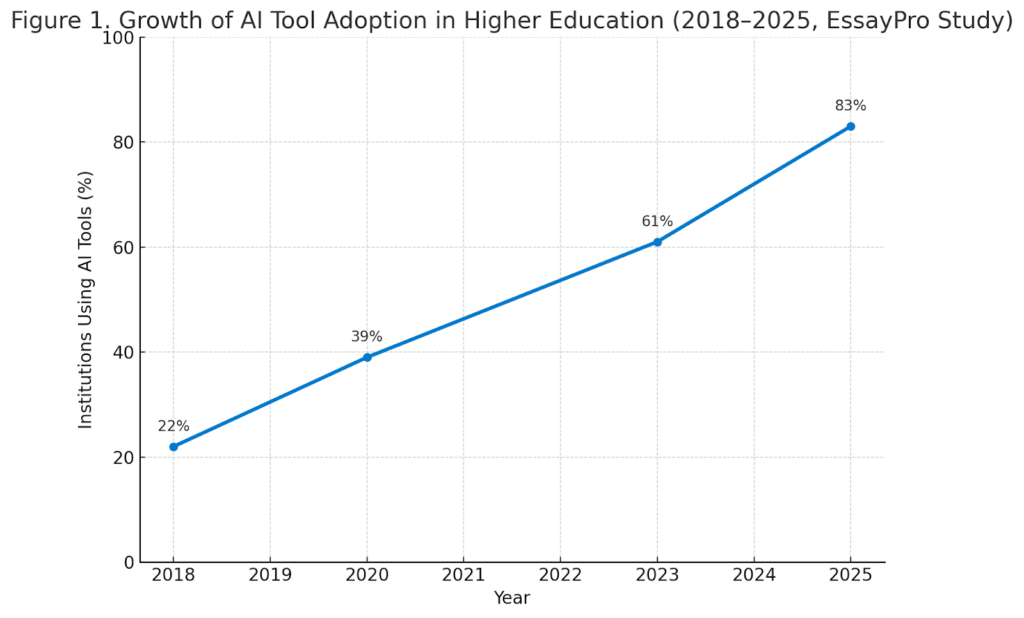The “we need to decide” moment
It usually hits at an inconvenient time. Not when you’re sipping coffee with a calm mind and a free afternoon—more like after a confusing phone call, a missed medication, or a “small” driving incident that didn’t turn into a disaster… this time.
If you’re in or near Richmond, Virginia, the options can feel both plentiful and impossible: assisted living communities, memory care neighborhoods, “hybrid” buildings that offer both, and well-meaning friends saying, “You’ll just know what’s right.” (You won’t. Not at first.)
And if you’re googling Assisted Living Placement agency in Richmond VA late at night, you’re probably not looking for generic definitions. You want to know what life will actually look like for your loved one next month—and whether you’re about to make a choice you’ll regret.
Here’s the comforting truth: most families don’t need a perfect decision. They need a safe, workable level of care that matches what’s happening right now, with a plan for what happens if things change.
Why this choice feels heavier than it looks

Photo by Freepik
Because it’s not just a housing decision. It’s identity, autonomy, and safety all tangled together.
- Assisted living can feel like “helpful support.”
- Memory care can feel like “something is really wrong.”
But the labels don’t always reflect reality. Sometimes memory care is the most freedom a person can safely have. Sometimes assisted living is exactly right—until it isn’t.
A quick myth to drop right now
Myth: “Memory care is only for people who don’t recognize their family.”
Reality: Memory care is often for people who still have plenty of good days… but also have unsafe moments (wandering, impulsive exits, medication confusion, nighttime disorientation) that need a more secure environment.
Two quick definitions that actually help
Let’s keep this simple and practical, not textbook-y.
What assisted living is
Assisted living is designed for seniors who need some help with daily tasks, but who can still function with moderate independence.
Typical support includes:
- help with bathing, dressing, grooming
- medication reminders/assistance (varies by state/community)
- meals, housekeeping, laundry
- social activities and transportation options
The “feel” of assisted living is often apartment-style living with support available—think of it like having a helpful team nearby, not a locked unit.
What memory care is
Memory care is a higher-support setting for people living with cognitive impairment—most commonly dementia. It’s built around structure, supervision, and safety, especially when a person may wander, become disoriented, or struggle with judgment.
Memory care often includes:
- secured layouts and controlled exits (to prevent unsafe wandering)
- staff trained in dementia communication and redirection
- routines that reduce anxiety and confusion
- more hands-on help with daily living
- activities designed for cognitive needs
Many memory care residents are living with Alzheimer’s disease, but not all. The key is not the diagnosis label—it’s the risk level and support needs.
The real differences that matter day-to-day
You’ll hear a lot of marketing language on tours. Here are the differences that show up when it’s Tuesday night and your loved one is having a rough moment.
Staffing and supervision
Assisted living is usually built for residents who can:
- follow basic safety instructions
- ask for help when needed
- navigate common areas without getting lost most of the time
Memory care is designed for residents who may not reliably do those things. You’re typically looking at more supervision, especially around transitions (meals, bedtime, bathroom trips).
Safety and wandering prevention
If wandering risk is on the table—even “once in a while”—it’s not a small detail. It changes the level of safety required.
Memory care communities often have:
- secured courtyards or indoor walking loops
- controlled exits and monitoring systems
- layouts that reduce dead ends and confusion
Assisted living may be perfectly safe for many people, but it’s generally not engineered for consistent wandering risk.
Activities, routines, and cues
Assisted living activities are often broad: games, outings, fitness classes, crafts, speakers.
Memory care activities are usually more structured and cue-based:
- simpler steps
- guided participation
- familiar routines
- calmer pacing to reduce frustration
This can be the difference between someone thriving and someone spending all day feeling lost.
Care planning and family communication

Photo by Freepik
In both settings, you want clear care planning—but memory care typically requires more frequent adjustment as cognition changes.
A good community will tell you:
- how often care plans are reviewed
- how they document changes
- how they communicate with families (and who your go-to person is)
Side-by-side comparison table
Here’s a quick table you can screenshot for tours and phone calls.
| Feature | Assisted Living | Memory Care |
| Best for | Moderate help needs, relatively stable judgment | Cognitive impairment with safety risks |
| Environment | Often apartment-style, more open | Secured setting with structured layout |
| Supervision | Intermittent, responsive | More continuous and proactive |
| Wandering support | Limited | Built-in prevention and redirection |
| Activities | General senior programming | Dementia-informed, cue-based routines |
| Staffing training | Varies | Typically dementia-specific training |
| Family concern it solves | “Needs help day-to-day” | “Safety and confusion are increasing” |
Where the overlap can confuse families
Some communities offer both assisted living and memory care in the same building. That can be great—if transitions are smooth and not treated like an eviction.
Ask directly:
- “How do you handle step-ups in care?”
- “What triggers a move from assisted living to memory care here?”
- “Do costs change gradually or jump suddenly?”
When assisted living is usually the better fit
Assisted living often makes sense when your loved one needs consistent support but still has enough judgment to stay safe with a lighter structure.
Common signs
Assisted living may fit if your loved one:
- needs help with bathing, dressing, or meals
- is lonely or isolated at home
- struggles with housekeeping or laundry
- misses medications occasionally but can cooperate with a routine
- can generally navigate their environment without getting lost
- can use the call system or ask staff for help
A big green flag is cooperation. If your loved one accepts help (even grudgingly), assisted living can work beautifully.
A “watch list” for the next 6–12 months
Even if assisted living is right now, keep an eye on:
- increasing nighttime confusion
- repeated “exit seeking” (trying to leave to “go home”)
- escalating paranoia, agitation, or unsafe impulsivity
- frequent falls tied to poor judgment (not just weakness)
- missed meals because they forget to go to the dining room
Think of assisted living as a sturdy stepping-stone. It’s not a failure if you eventually need a different one.
When memory care is usually the safer fit
Memory care is often the right call when the main issue isn’t physical help—it’s judgment, orientation, and safety.
Common signs
Memory care may be a better fit if your loved one:
- wanders or gets lost (even in familiar places)
- forgets they can’t cook safely and leaves burners on
- has unpredictable confusion, especially late afternoon/evening
- can’t reliably follow safety directions (“use your walker”)
- has increasing difficulty recognizing hazards (traffic, stairs, strangers)
- becomes anxious or agitated in busy, open environments
Behavior changes people underestimate
Families sometimes wait too long because the person still seems “with it” in conversation. But conversation is not the same as safe functioning.
Underestimated signs include:
- refusing showers due to fear or confusion
- rummaging and hoarding (especially unsafe items)
- accusing others of stealing
- mixing up day and night
- repeatedly calling family in panic, unable to self-soothe
Memory care isn’t about taking away freedom. It’s about creating safer freedom—like moving from an open highway to a well-lit, slower road with guardrails.
The gray zone
This is where most families live: “Not severe enough for memory care… right?”
Starting in assisted living and transitioning later

Photo by Freepik
Starting in assisted living can make sense when:
- your loved one is mostly oriented
- wandering isn’t present (or is extremely rare and manageable)
- they benefit from social life and lighter structure
- you want a gentler transition out of the home
If the building also has memory care, that can reduce the trauma of moving again—if the organization handles transitions thoughtfully.
When that strategy backfires
It can backfire when:
- safety issues are already frequent, and assisted living can’t monitor enough
- your loved one needs secured space now
- the assisted living environment is too stimulating and increases agitation
- the family is told “let’s try it” without honest discussion of risks
If your gut says, “We’re one bad night away from a crisis,” it’s worth taking that feeling seriously.
A fast decision tool
No tool is magic, but this one helps families stop debating in circles.
10 questions to answer together
Rate each question as: 0 (no), 1 (sometimes), 2 (often)
- Does your loved one get lost in familiar places?
- Have there been unsafe cooking or appliance incidents?
- Do they wander or attempt to leave unexpectedly?
- Do they forget meals or refuse to eat without prompts?
- Is nighttime confusion a regular issue?
- Do they resist help with hygiene in a way that escalates?
- Are they taking meds incorrectly without supervision?
- Have there been repeated falls tied to poor judgment?
- Do they become fearful, paranoid, or easily agitated?
- Can they ask for help reliably when something is wrong?
How to interpret your answers
- 0–6 total: assisted living may fit, with monitoring
- 7–12 total: could be either—tour both and ask hard questions
- 13–20 total: memory care is likely the safer match
This isn’t about labeling your loved one. It’s about matching support to reality.
Touring communities around Richmond
Tours can feel like speed-dating with brochures. Try focusing on a few “tell me the truth” moments.
What to notice during a meal
Meals reveal daily life more than any lobby ever will.
Look for:
- Are residents engaged or mostly parked and quiet?
- Do staff assist discreetly and respectfully?
- Does anyone seem rushed or ignored?
- Are there choices, and do residents actually get them?
Ask:
- “How do you support someone who forgets to come to meals?”
- “What happens if a resident refuses to eat?”
What to notice in hallways and common areas
Hallways show staffing patterns.
Notice:
- Are call bells answered promptly?
- Do staff greet residents by name?
- Are people moving with purpose or just sitting unattended?
In memory care, look for:
- clear visual cues
- calm tone
- safe walking paths
- residents engaged at an appropriate level (not overwhelmed)
What to ask about nighttime
Nights are when many families worry the most.
Ask:
- “How do you handle nighttime bathroom needs?”
- “What staffing looks like overnight?”
- “How do you respond to nighttime wandering or anxiety?”
A good answer is specific, not “We keep an eye on them.”
How to spot a good dementia approach
In memory care, pay attention to how staff communicate.
Green flags:
- gentle redirection (“Let’s do this together”)
- validation (“You’re worried—let’s sit for a minute”)
- offering choices instead of arguing facts
If you hear a lot of “No, you can’t” with no alternatives, that’s worth noting.
Money talk without the sugarcoating

Photo by Freepik
Costs vary widely, and it’s easy to feel awkward asking direct questions. Ask anyway. Future-you will be grateful.
What drives pricing
Common pricing drivers include:
- level of hands-on assistance needed
- medication management complexity
- safety needs and supervision (often higher in memory care)
- room type and community amenities
Some communities use tiered care levels; others do point systems. The structure matters less than transparency.
Questions that protect you from surprise costs
Bring these on tours:
- “What’s included in the base rate?”
- “What triggers a rate increase?”
- “How often are care needs reassessed?”
- “What services cost extra?”
- “If needs increase quickly, what happens?”
If answers feel slippery, keep looking. This is not the place for mystery math.
When a placement advisor helps
Sometimes families do great touring on their own. Other times, it’s like trying to buy a car in a language you don’t speak—possible, but exhausting.
A good Assisted Living Placement agency in Richmond VA can help by:
- narrowing options based on care needs, budget, and location preferences
- explaining what questions to ask (and what answers actually mean)
- coordinating tours so you’re not calling ten places repeatedly
- helping you identify whether assisted living is enough—or memory care is safer
What to expect from a good referral process
You should feel:
- listened to (not rushed)
- educated (not pressured)
- supported with comparisons that match your loved one’s real needs
- clear about next steps
If it feels like a sales funnel, that’s your cue to pause.
Why some families choose one specific team
Always Best Care can be a strong choice when you want local guidance and services that stays practical and family-centered.
They help you compare assisted living and memory care options without turning the process into a pressure cooker.
You’ll usually get clearer shortlists, better tour questions, and support that respects your loved one’s dignity.
For families who feel overwhelmed, that calm structure can make the decision feel doable again.
Three real-world decision scenarios
Scenario 1: “Mostly fine… but getting lost sometimes”
Your dad still tells great stories and pays his bills—until he doesn’t. He drives to the store and ends up three neighborhoods away. He laughs it off. You don’t.
In this scenario, assisted living may work if:
- wandering isn’t consistent
- he accepts routines and gentle check-ins
- the community has strong staff visibility and engagement
But you should tour memory care too, because “getting lost sometimes” is often the early version of “unsafe exits later.” The goal is to choose a setting that won’t require a panicked move after the next incident.
Scenario 2: “Safe-ish at home, but caregiving is breaking us”
Your mom might manage with help, but the family system is cracking: missed work, constant worry, sibling tension, resentment, guilt.
This is where families sometimes choose assisted living even if the senior could stay home a bit longer—because the hidden cost of “keeping them home” is crushing everyone.
The right question becomes:
Is the plan sustainable for six more months—not just six more days?
Scenario 3: “Assisted living didn’t work—what now?”
This happens more than people admit.
If assisted living isn’t working, it’s usually because:
- the environment is too open or confusing
- staff can’t supervise at the level needed
- your loved one is repeatedly unsafe or distressed
In many cases, moving to memory care isn’t a “bigger loss.” It’s a better match—more cues, more structure, more calm. Families often say the surprising part is how much their loved one settles once the environment finally fits.
Your Next Best Step
If you’re still torn, don’t try to solve the whole future today. Solve the next right step.
- List the top three risks you’re most worried about (wandering, meds, falls, nighttime confusion, nutrition).
- Tour one assisted living and one memory care option—back to back if possible—so the differences are fresh.
- Ask about the hard moments (nighttime, refusals, agitation, wandering). Watch how confidently staff answers.
- Decide based on safety + dignity, not guilt.
The “best” choice is the one that keeps your loved one as independent as possible without gambling on their safety—and keeps your family from living on the edge of burnout.
FAQs
1) Can someone start in assisted living and move to memory care later?
Yes, and it can work well—especially if the community offers both levels and handles transitions thoughtfully. The key is honesty about current risks. If wandering, unsafe exits, or severe nighttime confusion are already common, starting in assisted living may create a faster, more stressful move later.
2) What’s the biggest sign that memory care is needed even if someone “seems okay”?
Safety issues tied to judgment: wandering, getting lost, leaving appliances on, not recognizing hazards, or being unable to ask for help reliably. A person can be socially charming and still be unsafe day-to-day.
3) How do I compare two communities if they both look good on a tour?
Pay attention to specifics: staffing patterns, how they communicate with families, how they handle nighttime, and how they respond to refusals (like bathing). Ask for examples. Vague reassurance is less useful than a clear process.
4) Does memory care always mean a locked unit?
Often, yes—because controlled exits reduce wandering risk. But “secured” doesn’t have to feel restrictive. Many good memory care settings include safe walking paths, courtyards, and routines that provide freedom within a protected environment.
5) What should I bring to tours to make the decision easier?
Bring a short snapshot: medication list, recent hospitalizations, mobility status, typical day rhythm, known triggers (anxiety, sundowning), and your top three concerns. The clearer you are, the easier it is to get honest guidance about fit.





















